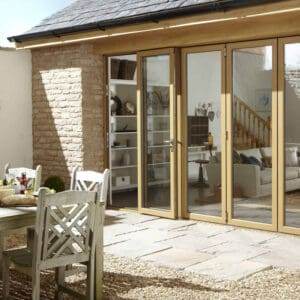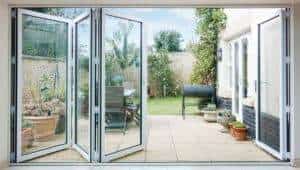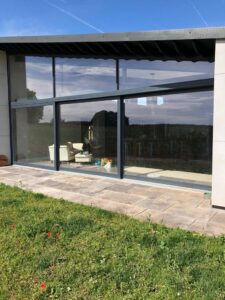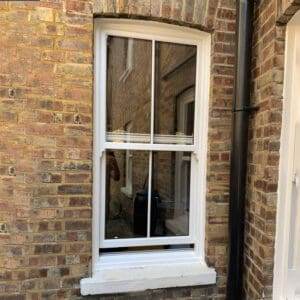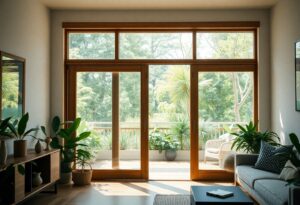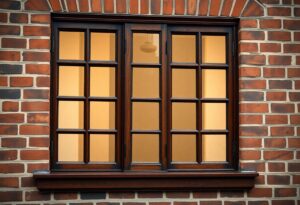Tilt and Turn windows are a great way to increase your home’s energy efficiency. By adjusting the tilt or turn of your window, you can control how much sunlight enters your home and reduce energy costs.
What are Tilt and Turn windows?
Tilt and turn windows are a type of window that can be opened in two ways. The first way is to tilt the window towards you, which allows the bottom part of the window to open. This is ideal for ventilation without letting in too much wind or rain. The second way to open a tilt and turn window is to turn the handle until the window opens like a door. This is perfect for cleaning the outside of your windows from inside your home!
The benefits of Tilt and Turn windows
Tilt and turn windows are one of the most popular styles of windows on the market today. There are a number of reasons for this, but chief among them is the fact that they offer a great deal of versatility. Here are just some of the benefits that you can enjoy when you choose tilt and turn windows for your home:
1. Easy to open and close: One of the best things about tilt and turn windows is that they’re very easy to open and close. This is thanks to the fact that they have two separate hinges – one at the top and one at the bottom. This means that you can simply tilt them inwards to open them, or turn them completely around if you want to clean the outside surface.
2. Ventilation options: Tilt and turn windows also give you a few different options when it comes to ventilation. If you just want to let some fresh air in, then you can simply tilt the window slightly downwards so that there’s a gap at the top. Alternatively, if you want maximum ventilation then you can turn the window all the way around so that it’s effectively an open door (just be sure to put something down first so that insects don’t come in!).
3. Safety features: Another big advantage of tilt and turn windows is that they come with built-in safety features. For example, most models will have a special locking system which prevents them from being opened fully if there’s someone trying to break into your home (this is often known as an ‘anti-burglary feature’). Additionally, because these types of windows don’t protrude outwards like other styles do, there’s no risk of anyone being able to climb up and enter your home through an open window – making them much more secure overall.
4. Space-saving design: Finally, another benefit of choosing tilt and turn windows is that their space-saving design means they can be used in rooms where other window styles wouldn’t work as well – such as in small bathrooms or en-suites where there isn’t much room for a traditional window frame
The features of Tilt and Turn windows
Tilt and turn windows are a type of window that can be opened in two ways. The first way is by tilting the window at the top, which allows for ventilation without opening the window fully. The second way is by turning the handle, which opens the window fully. This makes tilt and turn windows a great option for homes or businesses that want to be able to open their windows for fresh air, but still keep them secure when closed.
There are several benefits to tilt and turn windows:
–They’re easy to operate. You can open them with just a few turns of the handle, so you don’t have to fiddle with locks or latches.
–They’re versatile. You can open them partially for ventilation or all the way for cleaning.
–They’re secure. When closed, tilt and turn windows are very difficult to force open from the outside.
–They’re low maintenance. Unlike other types of windows, there’s no need to regularly oil or grease the hinges on tilt and turn windows
The history of Tilt and Turn windows
The origins of the tilt and turn window can be traced back to Germany in the early 20th century. The first recorded use of this type of window was in a patent filed in 1909 by German engineer Karl Feuerbach. The patent described a window that could be opened in two ways: either by tilting it inward from the top, or by turning it inward from the side.
It is not clear how widely used these windows were in Germany at that time, but they did gain some popularity in other European countries during the 1920s and 1930s. In particular, they were used extensively in Denmark and Sweden.
During the post-war period, tilt and turn windows became increasingly popular in Europe as a whole. This was due to a number of factors, including the introduction of new manufacturing techniques and an increase in demand for energy-efficient windows.
Today, tilt and turn windows are manufactured all over the world and are commonly used in both residential and commercial buildings. They are particularly popular in Europe, where they account for around 60% of all new window installations.
The types of Tilt and Turn windows
There are two types of Tilt and Turn windows: the standard Tilt and Turn window, and the more modern European-style Tilt and Turn window. The standard Tilt and Turn window has a single sash that tilts inwards at the top, allowing for ventilation without opening the entire window. The European-style Tilt and Turn window has two sashes that tilt inwards at the top and bottom, allowing for even better ventilation while still providing security.
The cost of Tilt and Turn windows
Tilt and turn windows are a type of window that can be opened in two ways. The first way is by tilting the window towards you, which allows for ventilation without allowing the rain or snow to come inside. The second way is by turning the handle of the window, which opens the window fully so that you can climb inside (or clean the outside of your home from the inside!).
Tilt and turn windows have become increasingly popular in recent years because they offer homeowners a lot of benefits. For one, they’re very easy to operate – even small children or elderly people can open and close them with ease. They’re also very secure since they can only be opened from the inside if you turn the handle to lock it in place. And because they open inwards, you don’t have to worry about wind blowing them shut (or knocking them over).
The main downside of tilt and turn windows is that they tend to be more expensive than other types of windows. But if you’re looking for convenience, security, and easy operation, they may be worth the extra cost.
How to care for Tilt and Turn windows
1. Keep the windows clean: In order to keep your Tilt and Turn windows in good condition, you need to regularly clean them. You can do this by using a mild soap and water solution. Be sure to rinse the windows afterwards with clean water.
2. Inspect the window seals: Another important aspect of caring for Tilt and Turn windows is to regularly check the seals. Over time, these seals can become damaged or worn out, which can lead to drafts and energy loss. If you notice any damage, be sure to replace the seal as soon as possible.
3. Lubricate the moving parts: In order for your Tilt and Turn windows to operate smoothly, you need to lubricate the moving parts on a regular basis. This will help to prevent sticking and makes it easier to open and close the windows.
4. Check for damage: It’s also important to inspect your Tilt and Turn windows for any damage that may have occurred over time. If you notice any cracks or chips in the glass, be sure to have them repaired as soon as possible so that they don’t cause further damage.
FAQs about Tilt and Turn windows
1.What are Tilt and Turn windows?
Tilt and turn windows are a type of window that can be opened in two ways- by tilting the top of the sash towards you to allow ventilation without opening the window fully, or by turning the handle to release the bottom hinge, allowing the window to swing open inwards from hinges on the side. This allows for easy cleaning from inside your home.
2.How do I know if a Tilt and Turn window is right for my home?
There are a few things you should consider when deciding if a Tilt and Turn window is right for your home. First, think about what type of opening you need- do you want a window that vents or one that opens fully? Second, consider how easy it would be to clean the outside of your windows from inside your home- with Tilt and Turn windows, this is much easier than with other types of windows. Finally, think about whether or not you want screens on your windows- Tilt and Turns can accommodate screens, but they may not be necessary depending on your needs.
3.Are there any special considerations I should take into account when choosing Tilt and Turn windows?
When choosing Tilt and Turn windows, there are a few special considerations you should take into account. First, think about what type of opening you need- do you want a window that vents or one that opens fully?
Second, consider how easy it would be to clean the outside of your windows from inside your home- with Tilt and Turn windows, this is much easier than with other types of windows. Finally, think about whether or not you want screens on your windows- Tilt and Turns can accommodate screens, but they may not be necessary depending on your needs.


